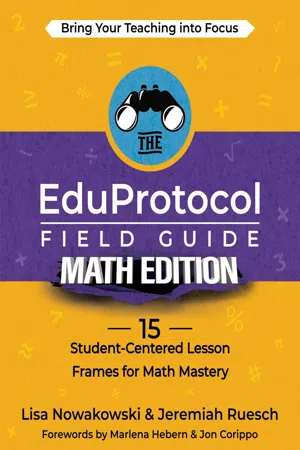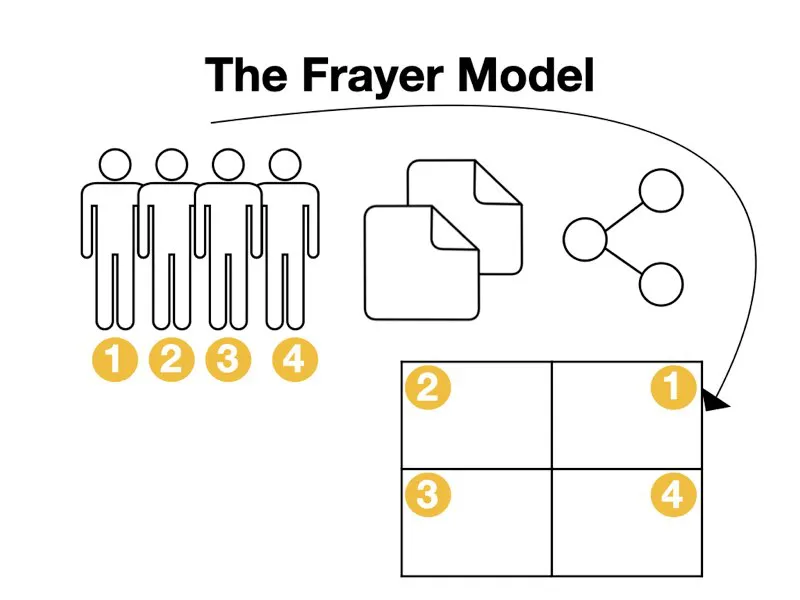
The EduProtocol Field Guide Math Edition
15 Student-Centered Lesson Frames for Math Mastery
- English
- ePUB (mobile friendly)
- Available on iOS & Android
The EduProtocol Field Guide Math Edition
15 Student-Centered Lesson Frames for Math Mastery
About This Book
The EduProtocol Field Guide: Math Edition provides educators with a treasure trove of modular, innovative, and engaging activities that can be adapted to any grade level. Approachable and exciting, EduProtocols are gamified pedagogical interventions that flexibly work with a variety of learning styles so math teachers can meet students where they are, even as they inspire them towards subject mastery. Thoughtfully and comprehensively presented with step-by-step instructions for implementation, each EduProtocol is designed with Common Core standards and Four Cs practices in mind. Whether you are new to EduProtocols or an experienced teacher looking to add even more tools to your pedagogical toolkit, The EduProtocol Field Guide: Math Edition has something for everyone interested in customizable student-centered learning activities.
Frequently asked questions
Information
A Guide to New EduProtocols

The Visual Directions EduProtocol

Academic Goals:
- Clarifying the conveyance of directions.
- Seeking input from learners to tell you their understanding of directions.
- Visually telling directions in a few icons, makes clear what is essential to task.
Teacher Big Ideas:
- One of the most difficult and tiresome parts of working with dozens to hundreds of kids is having to repeat directions multiple times.
- This process seeks to invite the students into the mix, to collaborate, to interpret and make sense of visual cues, and to take a risk in sharing their interpretation with a partner or whole class.
- Most importantly, it provides a pathway for students to make sense of what they are going to be doing from their peers and their own voices.


Table of contents
- Cover
- Title Page
- Copyright
- Dedication
- Contents
- Foreword – by Jon Corippo
- Foreword – by Marlena Hebern
- I. Mathematics through the Looking Glass
- II. Remixed and Revised
- III. A Guide to New EduProtocols
- Acknowledgments
- Continue the Journey
- Notes
- About the Authors
- More from Dave Burgess Consulting, Inc.